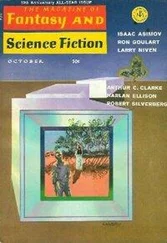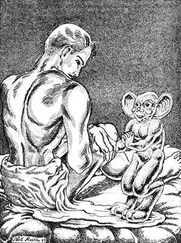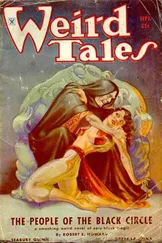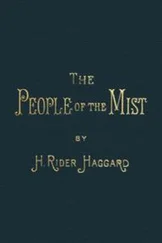Next came two undergraduates, both of them usually biology majors at the college (these turned over so quickly and were at any rate so interchangeable that none of us ever bothered to learn their names), both of them headed for medical school, both of them always looking rather frightened: to be working in Smythe’s lab as an undergraduate was an almost kingly honor, and they wore on their faces expressions of fear and pride. Looking at them, I sometimes wondered what promises had been extracted from them to win them these slots, what tests they had had to pass with their advisers, what obligations they now carried.
After the undergraduates came a man named Dean O’Grady, who, in the humor of the day, was known as Fat Irish because he was fat and Irish. Fat Irish was the person in the lab whose work was the most visible and qualifiable: while the rest of us took notes and flicked our fingernails against air bubbles in syringes and extracted blood and took more notes, Fat Irish took care of the animals, and did the things we would not. He cleaned the monkeys’ cages and fed them a slurry of browned bananas and oatmeal. He changed the mice’s water and cleaned weeping scabs from the dogs’ eyes. I was impressed by his impassivity: he was neither an animal lover nor a sentimentalist (the lab had once had one of those, I learned, and it had ended disastrously when Fitch had discovered him late one night trying to shoo the dogs from their cages and into his waiting truck), nor did he seem impressed by or interested in the lab itself. You sometimes had animal caretakers — as I would have myself one day — whose hatred for the people who ran the lab was visceral. It was not because they were animal lovers (a job application from anyone who admitted to loving animals was immediately thrown away) but because they abhorred science and the people who practiced science, all of us in our white coats and what they considered our despicable arrogance, though whether it was our education they hated or what we were doing with our education (they considered one excessive and the other self-indulgent) was difficult to say. They were not people capable of superior cognitive reasoning, and because they were unable to understand what it was we were doing and yet were equally unwilling to admit their limitations, they found it easier to call us names and detest us. (It is not only animal caretakers who behave like this, but also journalists, and animal activists, and priests, and politicians, and housewives, and artists — people, in other words, for whom every mystery must be attributed to human arrogance and evil.)
But to return to Fat Irish: he would arrive at four every afternoon and begin his work, and when we came back the next day, messes would be cleaned, water trays filled, and the labs would smell more intensely of their signature perfume, the eggy scent of detergent and the sweetish fragrance of stale feces. Sometimes, working late, you would see Fat Irish and nod at him, and he would nod back. He would not try to make conversation. If you asked him a question directly, he would answer in the most perfunctory way — not rudely, but not foisting on you the sort of chatter (about the weather, working hard, their various aching body parts) of which janitors and waiters and various service staff in general seem to have an endless supply. Instead it was “Good morning, Fat Irish.” “Good morning.” “Basset Four [meaning the basset hound in cage 4] croaked last night.” “I’ll take care of it.” And that was all.
After Fat Irish we come to the bottom: the lab techs, David and Peter, the two of them granted neither last names nor desks, although they did have white coats. They went from station to station, cleaning flasks, cutting pieces of mesh, scrubbing spoiled biomatter from test tubes, delivering mugs of burned coffee, fetching mice from cages, returning mice to cages. I tried not to use them too frequently: first, it was faster to do the work myself, and second, they were both loquacious, fond of telling you about their women, or about the meal they were awaiting that night, or about how sick of their jobs they were. They were not needlessly cruel to the animals, but they were sloppy: they clutched the mice so tightly that they squealed and kicked their small feet in the air; they forgot which dog went into which cage; they knocked over Bunsen burners and swabbed up their ensuing mess imperfectly, so that you were for the rest of the day forced to pick your way around your own desk until the night janitor came to clean what they had missed.

The lab was located on the first floor of a building called Chase Hall, ten stories, red brick, ugly and utilitarian; it was destroyed some years ago. There was a main room, about twelve hundred square feet, a long rectangle with four windows looking out onto the green beyond. In the south corner, farthest from the roar of the building incinerator, which abutted our lab, was Smythe’s office, a small, glassed-in square in which sat a burled desk (perfectly, suspiciously clean-surfaced), a metal filing cabinet, and a metal bookcase. Just outside his office, running along the east side of the room, beneath the windows, were front-to-front metal desks for each of the chief and junior residents and for the medical students and undergraduates. The remainder of the room was dominated by eight long metal countertops fitted with sinks and crowded with Bunsen burners and flasks. The floors were linoleum and the walls a pale butter that always made me crave bread or potatoes — something starchy and floury.
Behind the main room, running its length, were the two animal labs. The first, to the south side, was the mice lab, windowless, about three hundred square feet, and lined on three sides with cages stacked some seven feet high along the walls, which were here a shiny, curdled, charred orange color. The mice lab, like animal labs everywhere, stank of damp newspaper and feces and the moldy, algaeish stench of wet fur. Every night the floors were swabbed with disinfectant, but it seemed only to intensify the room’s native odors, which were so impermeable they seemed to have been baked into the walls. Adjacent to the mice lab was the dog lab, almost twice as large but with the same smells, the same rust-colored walls, the same wire cages, although here they were stacked all the way to the ceiling. There were thirty-six or so cages, and they were all small, about two feet square, so that the dogs (usually hounds, for some reason) were unable to stand and spent their days on their sides or crouched, front legs spread open, in a way that made them appear drunk and unseemly. Then there were about ten or twelve taller cages, and these were reserved for monkeys, which we had with some regularity, but not frequently enough or in large enough numbers to merit their own lab. What I remember most about those labs is their silence — one heard the mice’s frantic, shrill peeping, the dogs’ futile, squealing whimpers, only when they were being removed from or replaced in their cages. The rest of the time they were silent, staring at their paws and waiting. Only the monkeys complained and chattered and screeched all day, shrieking at nothing. They were a bother for that reason, and for the enormous mess they made, and for the intensity of their odors, although they were of course more valuable specimens to work with.
I spent most of my time with the mice. One of Parton’s ongoing experiments — the exact parameters of which I never did discover, because strangely, although I was trusted with much, I was apparently not seen as consequential enough to learn what it was I passed most of my days doing — involved infecting mice with various sorts of viruses in the hopes that they would provoke a cancer. You began with, say, a dozen mice, one mouse per each numbered cage. Then you would take a virus and inject it with a mix of saline into each mouse. And then you would wait. Every day you would weigh and measure and observe them. Did they seem torpid? Were they eating and drinking properly? Were they growing any strange nodules (you certainly hoped they would, but it never happened, not in any of the tests I conducted)? I recorded the results in my notebook, which Parton might have asked to see but never did. Boredom made me fanciful: “No. 12. White mouse,” I would write (they were all white), “chalky in complexion. Nose and pawpads: rose pink from yesterday, when carnation pink. Personality: dull.” (They were all dull. They were mice, after all. They spent their days doing mousy things.) After a certain point, around three months, you would kill them, autopsy them, and begin with a fresh group.
Читать дальше













